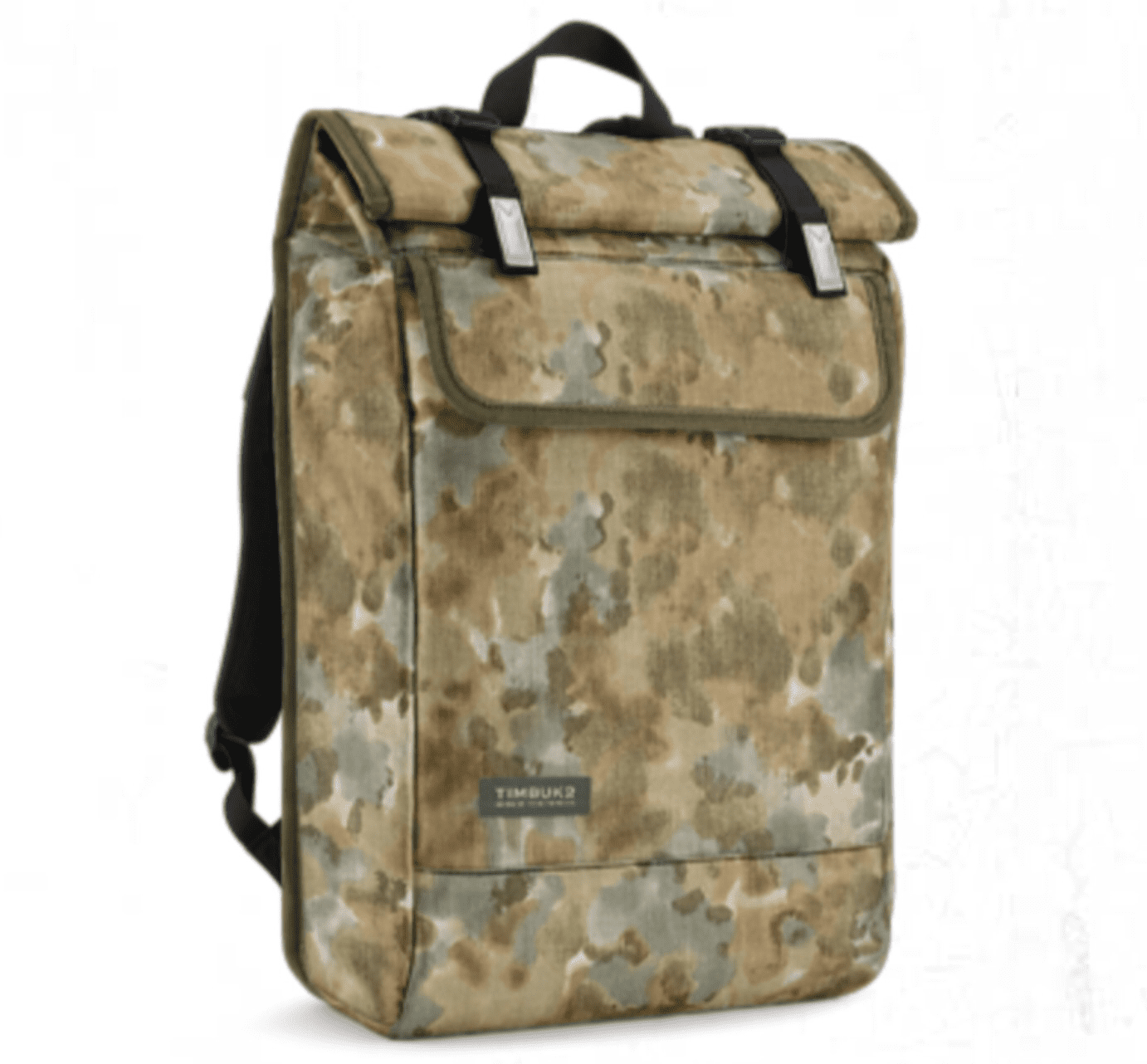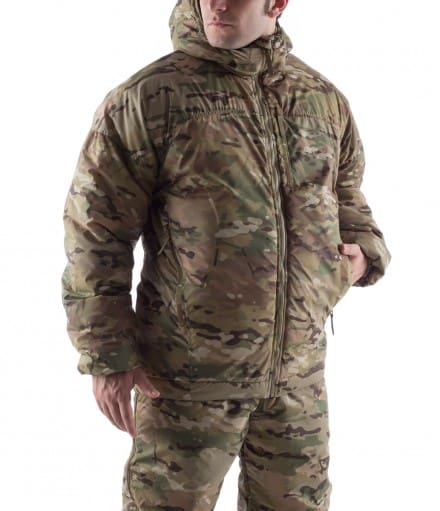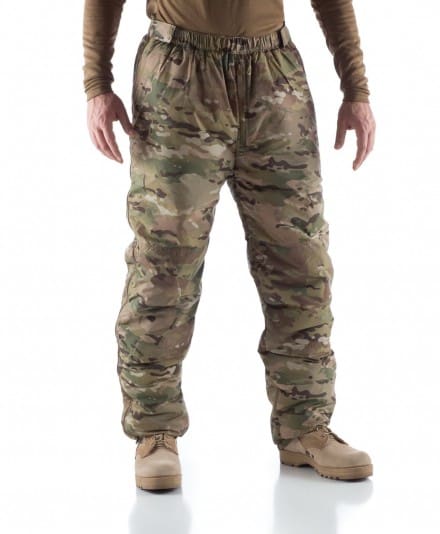
Thanks Erick!
Designed for use down to -60 Deg F, the Level 7 garments from Massif are components of the latest update of the USSOCOM issued Protective Combat Uniform, Block 2. Yes, this is the actual garment issued to SOF. Although Massif is well known for their FR garments, the Level 7 Jacket and Pants are non-FR.
Massif did a great job redesigning the garments which retain the same overall functionality of their earlier incarnations with a few new enhancements. They’ve significantly reduced the weight from earlier incarnations of PCU Level 7 knocking about 25 ounces off of the total weight of the Jacket, Vest and Pants (size Medium) in this version.
The big story here is the fabric selection for this ensemble. The face fabric is 2.1oz Nextec Peak 40D Ripstop which is not only lightweight and tear resistant but the fabric is encapsulated in Silicone so it sheds and won’t absorb water. The liner too is a lightweight 40D ripstop fabric but is 1.5oz Brookwood Ecology which you may remember from the Level 4 windshirt. It has a very soft hand and is comfortable against wind and sun chapped skin. For insulation, Massif chose 3.6oz Climashield Apex for its CLO factor and compressibility. Zippers are color matched and incorporate zipper garages.

The Jacket has an ergonomically shaped, helmet-compatible smart hood for improved peripheral vision. It has a rear adjustment cord with barrel lock to keep it where you want it.

Additionally, there are two internal mesh pockets for water bottles or other items you need to keep warm as well as a zippered chest pocket accessible from the outside of the jacket.
Finally, there are two large, hand warmer pockets accessible via zippers on each side of the jacket.

The Pants have full side zips for ventilation, and easy donning and doffing. Additionally, there is reinforced fabric along the knee for increased durability. They’ve also retained the elasticized waist to accommodate varying thicknesses of underlayers.
Overall, this new design has reduced garment weight, and improved functionality and comfort. Feedback from the field has been very positive.This a great opportunity for individuals as well as organizations that are not part of the SPEAR program to incorporate Level 7 into their gear. It’s important to note that Massif offers GSA and contract pricing for approved customers. Additionally, they have been very good in the past at working with individual military and LE. Available in MultiCam, sizes Small – XXLarge in Regular and Long lengths.
Way back in May of 2012 we offered the first glimpse of the US Army Camouflage Improvement Effort Phase IV finalist Brookwood family of patterns.
In April of 2013 we were able to share a little more info with photos of the printed webbing from Texcel.
A few months ago, Brookwood starting seeding sample yardage to a variety of companies. During a visit to Grey Ghost Gear in November I noticed a roll of the Brookwood transitional pattern and they made a Stealth Operator Pack in the pattern for me. I posted a photo on Instagram.
In this photo from S.O. Tech we see all three Brookwood patterns from their finalist family of patterns for the US Army Camouflage Improvement Effort. They promise some finished goods in these patterns during SHOT Show.
We got some photos of Brookwood’s finalist submission for the US Army Camouflage Improvement Effort and at first we didn’t want to offer them because the patterns didn’t seem to share a common geometry. We were actually hoping to get some better photography that would show the patterns’ common features. Turns out, having a true family of patterns with common geometry was just general guidance and not a factor in selection and the Brookwood patterns don’t include this feature. So here they are.
After several delays, the Army has chosen four finalists in their Army Camouflage Improvement Effort. The Army conducted an exhaustive down select using a picture-in-picture technique with 900 Soldiers viewing the patterns in 45 environments. There was a candidate pool of around 20 families of patterns each sharing common pattern geometries but with individual colorways for Woodland, Desert, and Transitional environments with a possible fourth pattern for Organizational Clothing and Individual Equipment. This optional OCIE pattern would blend in with the other patterns so that separate sets of PPE would not have to be purchased to match each pattern. Some developers satisfied this requirement with their Transitional pattern.
The finalists are:
ADS Inc as Prime, partnered with Guy Cramer
Brookwood Companies
Crye Precision
Kryptek
(Please note that the contract award figures are ceiling amounts. Total funds will not be awarded unless all contract options are enacted. The disparity in award amounts is driven by offeror bids and is for the total non-exclusive Government license if the vendor is selected and optioned as the new Army camouflage provider.)
Additionally, there will be an Army developed family of patterns entering the field trials which should commence in about 6 months according to the plans overall timeline which has already slipped several times.
This next set of testing will include blending tests, probability of detection, and a live Developmental Test with an Operational Test flair. This latter event will put the patterns through their paces with squad size elements pitted against multiple observers from numerous points of view. Another interesting aspect of this testing is that the Army will also assess how long it takes for an observer to reacquire a test subject after he takes cover and comes back into view. During the industry day, there was an indication that they may also assess the pattern’s performance in both dry and wet conditions. This was a major issue during the development of the AOR patterns so we hope they integrate it into the test plan.
We’ve also heard that the candidate patterns may also be evaluated using OCP (MultiCam) PPE since the Army has made such a large investment in this equipment and it may well have to continue to serve, at least with some units as long it remains serviceable. The interest is to see if OCP equipment can be effectively used in conjunction with the new patterns. Testing of varied PPE against unmatched uniforms in Afghanistan indicated that the contrast can be so great as to work against the camouflage effect.
After the testing ends, a finalized report will be presented to the Army leadership for action. Based on a variety of factors, they will decide how the Army will be camouflaged in the foreseeable future. We also hope that the other services consider the investment the Army has made in this process and make this a joint effort.
SSD applauds the selectees and the Army’s PEO Soldier and RDT&E community for taking on this herculean effort.